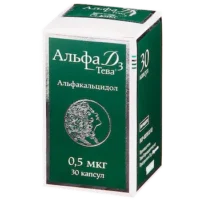Description
Nexium (Esomeprazole) Coated Tablets 20 mg. №7
Ingredients
- Active ingredient: Esomeprazole
- Other ingredients: Microcrystalline cellulose, crospovidone, anhydrous lactose, colloidal silicon dioxide, magnesium stearate, hypromellose, titanium dioxide, polyethylene glycol, and red ferric oxide.
Dosage
Recommended dosage: 20 mg once daily before a meal. Do not crush or chew the tablets. Consult a healthcare professional for personalized dosing.
Indications
Indicated for: Treatment of gastroesophageal reflux disease (GERD), erosive esophagitis, and pathological hypersecretory conditions like Zollinger-Ellison syndrome.
Contraindications
Do not use Nexium if you:
- Are allergic to esomeprazole or any components in the formulation.
- Are taking medications that interact with esomeprazole.
- Have severe liver disease.
Directions
How to take: Swallow the tablet whole with water. Follow the prescribed dosage and duration. Do not alter the dosage without medical advice.
Scientific Evidence
Efficacy: Studies have shown esomeprazole to be effective in reducing gastric acid secretion and providing symptom relief in acid-related disorders. Research by Labenz et al. (2006) demonstrated the superior efficacy of esomeprazole in healing erosive esophagitis compared to other proton pump inhibitors.
Additional Information
- Storage: Store at room temperature away from moisture and heat. Keep out of reach of children.
- Pregnancy: Consult a doctor before using Nexium during pregnancy or breastfeeding.
Pharmacologically, Nexium (esomeprazole) works by inhibiting the proton pump in the gastric parietal cells, thereby reducing acid secretion into the stomach. This action helps in treating conditions like GERD and ulcers by promoting healing and symptom relief.
Clinical trials have highlighted the effectiveness of esomeprazole in managing acid-related disorders with a favorable safety profile. Comparative studies have shown Nexium to have a longer duration of acid suppression and faster onset of action compared to other proton pump inhibitors, making it a preferred choice in the treatment of acid-related conditions.





